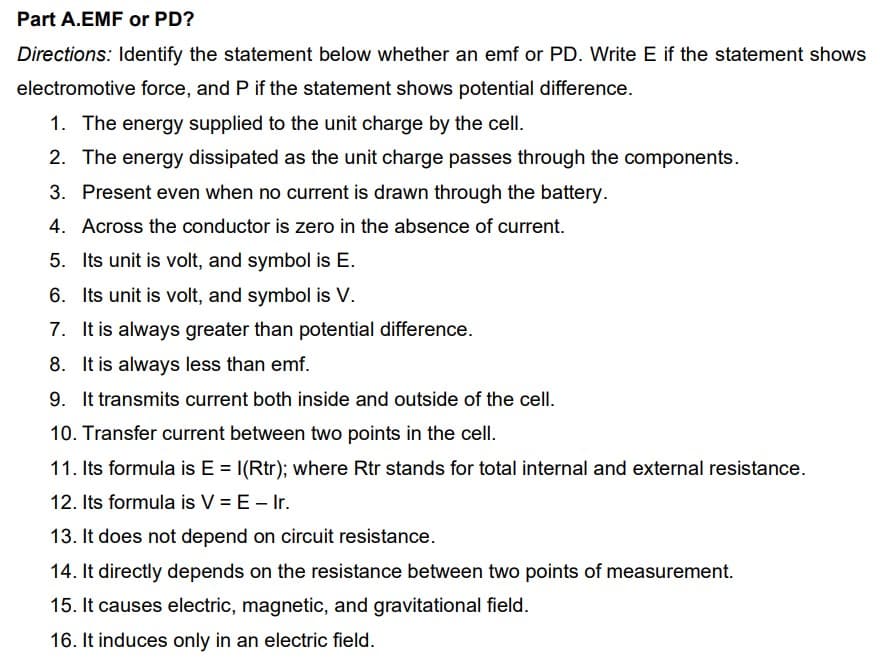Part A.EMF or PD? Directions: Identify the statement below whether an emf or PD. Write E if the statement shows electromotive force, and P if the statement shows potential difference. 1. The energy supplied to the unit charge by the cell. 2. The energy dissipated as the unit charge passes through the components. 3. Present even when no current is drawn through the battery.
Part A.EMF or PD? Directions: Identify the statement below whether an emf or PD. Write E if the statement shows electromotive force, and P if the statement shows potential difference. 1. The energy supplied to the unit charge by the cell. 2. The energy dissipated as the unit charge passes through the components. 3. Present even when no current is drawn through the battery.
Related questions
Question

Transcribed Image Text:Part A.EMF or PD?
Directions: Identify the statement below whether an emf or PD. Write E if the statement shows
electromotive force, and P if the statement shows potential difference.
1. The energy supplied to the unit charge by the cell.
2. The energy dissipated as the unit charge passes through the components.
3. Present even when no current is drawn through the battery.
4. Across the conductor is zero in the absence of current.
5. Its unit is volt, and symbol is E.
6. Its unit is volt, and symbol is V.
7. It is always greater than potential difference.
8. It is always less than emf.
9. It transmits current both inside and outside of the cell.
10. Transfer current between two points in the cell.
11. Its formula is E = I(Rtr); where Rtr stands for total internal and external resistance.
12. Its formula is V = E – Ir.
13. It does not depend on circuit resistance.
14. It directly depends on the resistance between two points of measurement.
15. It causes electric, magnetic, and gravitational field.
16. It induces only in an electric field.
Expert Solution
This question has been solved!
Explore an expertly crafted, step-by-step solution for a thorough understanding of key concepts.
This is a popular solution!
Trending now
This is a popular solution!
Step by step
Solved in 3 steps
